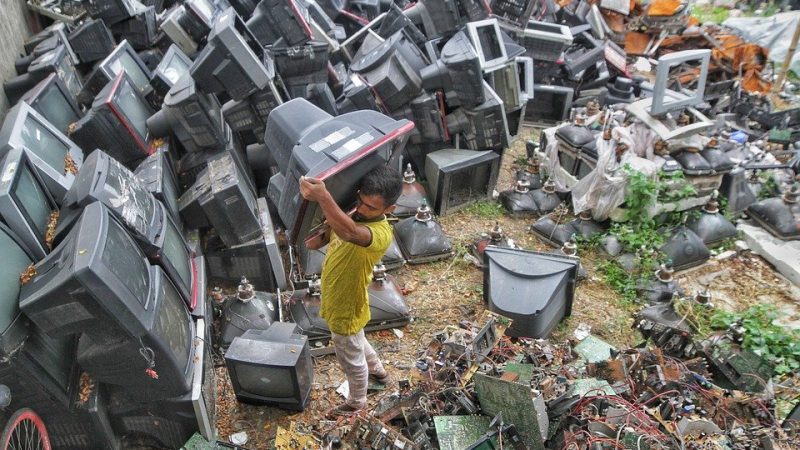Any idea, how we can get rid of our electronic waste? Maybe, bioleaching is the answer. This process is an interesting biotechnological alternative to the conventional chemical leaching. The hero of this process is an iron-oxidizing organism, called Acidithiobacillus ferroxidans.
Through bioleaching, valuable metals such as zinc, copper, nickel and aluminum can be efficiently ‘extracted’ from up-to-now unexploited waste material, e.g. shredded fractions from many daily life products ranging from toasters to automobiles or slags and ashes from the steel industry. Such wastes still contain reasonable amounts of metals, often considerably more than natural sources like ore minerals. Together with partners from the industry, the Austrian Centre of Industrial Biotechnology (acib) focuses on a smart way of recycling heavy metals from electronic and industrial waste streams.
Bioleaching is an interesting biotechnological alternative to the conventional chemical leaching. Electronic scrap waste dumps are commonly treated with concentrated sulfuric acid, percolating not only the target material, but also translocating leached heavy metals into the environment. To address the improvement of especially electronic waste treatment, the European parliament and council initiated the directive 2012/19 on waste electrical and electronic equipment (WEEE), which is aiming at a recovery rate of 85 %, and re-use/recycling rate of up to 80 % until 2018.
Lab-scale experiments demonstrate the huge potential of iron-oxidizing bacteria like Acidithiobacillus ferrooxidans, enabling an additional leaching rate of up to 70 % regarding aluminum for example. Scientists at acib are now working on the process optimization and adaption of microbial workers to meet actual process conditions, including mixed enrichment-cultivation from natural sources for a sustainable, most efficient waste treatment to meet the growing strain on natural resources.
This work is based on:
S. Thallner, C. Hemmelmair, S. Martinek, M. Haberbauer, W. Schnitzhofer: Potential of bioleaching for metal recovery from different waste fractions, European Summit of Industrial Biotechnology – ESIB, 14.11.2016 – 16.11.2016, Graz
Picture credits: Pixabay
